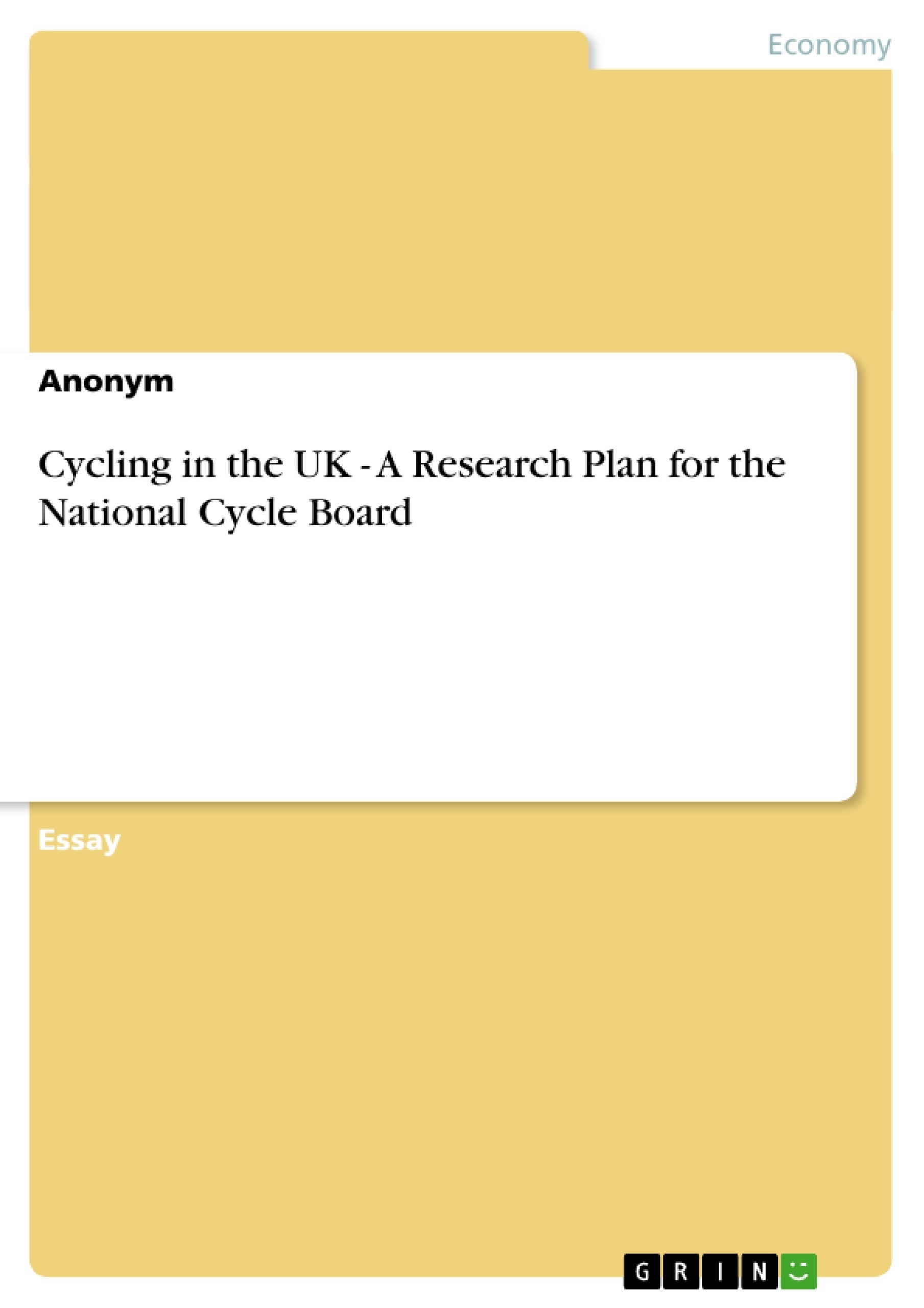Although Ayton et al. (2001) show that UK’s bicycle market recovered in 2001 after lost
turnover due to poor weather in 1999 and the ban of cycling in countryside to avoid spreading
of foot-and-moth disease, bicycles cannot be counted to the most favourite goods for both,
leisure and transport in the UK. Considering that in other European countries the
relative market size is twice as big as the market
for the bicycles in the UK (Fahrrad-online,
2002) it has been proofed that there is still a lot
of potential in the UK’s bicycle-market.
To gain a higher level of usage, a reasonable
marketing of bicycles has to be carried out.
However, and referring to Gater et al. (1965)
the essence of marketing is not to be understood
as to increase the sale of goods produced by
proper marketing-tools, but to produce the goods wanted by the customer. Hence, a reasonable market-research on the question ‘when people cycle and if they do so,
why they do so’ might help the NCSB (National Cycle Strategy Board) to gain a better
understanding of the bicycle market in the UK.
To avoid wrong interpreting of the data collected and to focus on the relevant target group,
Proctor (2000) suggests a systematic approach on the problem-definition.
Therefore, this report looks at the following research problem based on a goal orientated
approach (Appendix A):
‘Explore possible reasons what inhibits people to cycle and vice versa explore
motives what encourages people to use bicycles more frequently. Furthermore a
detailed consideration of complex market-, product-, and segment-structures is
required for this research’.
Inhaltsverzeichnis (Table of Contents)
- Introduction
- Research problem
- Research objectives and methodology
- Research brief
- Review of existing research
- Qualitative data collection
- Techniques of qualitative data research and selection of appropriate method.
- Selection of data analysis method
- Limitations
- Further research..
- Appendix
- Bibliography
- References
Zielsetzung und Themenschwerpunkte (Objectives and Key Themes)
This essay aims to develop a research plan for the National Cycle Strategy Board (NCSB) in the United Kingdom to gain a better understanding of the bicycle market. The research will explore factors inhibiting and encouraging bicycle use and identify key segments within the market. The research will utilize a systematic approach to problem definition and combine both quantitative and qualitative research methods.
- Factors inhibiting and encouraging bicycle use
- Environmental factors influencing cycling behaviour
- Key segments for the bicycle market (demographic and product-wise)
- Understanding the reasons and occasions for cycling
- The role of existing research and the need for further qualitative data collection
Zusammenfassung der Kapitel (Chapter Summaries)
The introduction sets out the research problem, highlighting the need for a deeper understanding of factors influencing bicycle usage in the UK. The essay emphasizes the potential of the bicycle market in the UK compared to other European countries. The research objectives are then outlined, emphasizing the need to determine both inhibiting and encouraging factors for cycling.
A review of existing research focuses on quantitative studies, including those by Ayton et al. (2001) and the DFT (1997), which illustrate the current usage patterns and identify potential barriers to cycling. This section highlights the reliance on quantitative data and argues for the need to complement it with qualitative research methods.
Schlüsselwörter (Keywords)
This research plan explores the bicycle market in the United Kingdom, focusing on key themes such as cycling behaviour, market segmentation, environmental factors influencing cycling, and the need for qualitative research methods to complement existing quantitative data. The research objectives are geared towards identifying factors inhibiting and encouraging cycling, with a particular emphasis on understanding the reasons and occasions for cycling.
- Quote paper
- Anonym (Author), 2003, Cycling in the UK - A Research Plan for the National Cycle Board, Munich, GRIN Verlag, https://www.grin.com/document/17221



